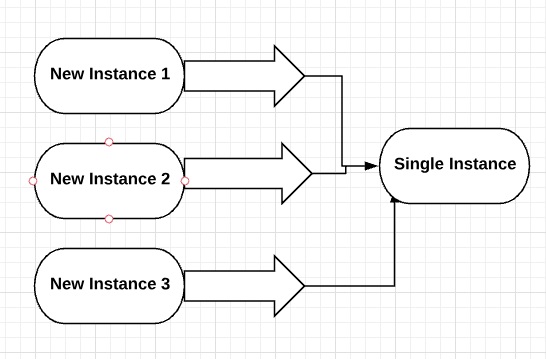
- Python Design Patterns - Home
- Introduction
- Python Design Patterns - Gist
- Model View Controller Pattern
- Python Design Patterns - Singleton
- Python Design Patterns - Factory
- Python Design Patterns - Builder
- Python Design Patterns - Prototype
- Python Design Patterns - Facade
- Python Design Patterns - Command
- Python Design Patterns - Adapter
- Python Design Patterns - Decorator
- Python Design Patterns - Proxy
- Chain of Responsibility Pattern
- Python Design Patterns - Observer
- Python Design Patterns - State
- Python Design Patterns - Strategy
- Python Design Patterns - Template
- Python Design Patterns - Flyweight
- Abstract Factory
- Object Oriented
- Object Oriented Concepts Implementation
- Python Design Patterns - Iterator
- Dictionaries
- Lists Data Structure
- Python Design Patterns - Sets
- Python Design Patterns - Queues
- Strings & Serialization
- Concurrency in Python
- Python Design Patterns - Anti
- Exception Handling
Python Design Patterns - Singleton
This pattern restricts the instantiation of a class to one object. It is a type of creational pattern and involves only one class to create methods and specified objects.
It provides a global point of access to the instance created.

How to implement a singleton class?
The following program demonstrates the implementation of singleton class where it prints the instances created multiple times.
class Singleton:
__instance = None
@staticmethod
def getInstance():
""" Static access method. """
if Singleton.__instance == None:
Singleton()
return Singleton.__instance
def __init__(self):
""" Virtually private constructor. """
if Singleton.__instance != None:
raise Exception("This class is a singleton!")
else:
Singleton.__instance = self
s = Singleton()
print s
s = Singleton.getInstance()
print s
s = Singleton.getInstance()
print s
Output
The above program generates the following output −

The number of instances created are same and there is no difference in the objects listed in output.
Advertisements